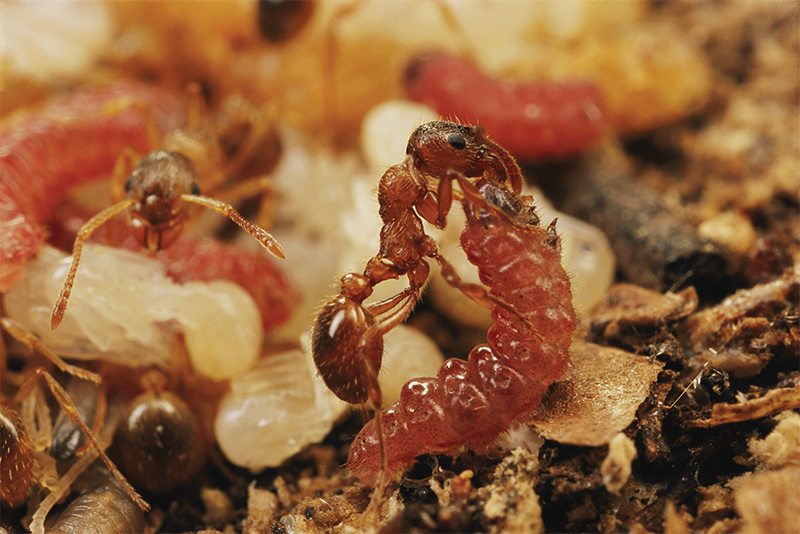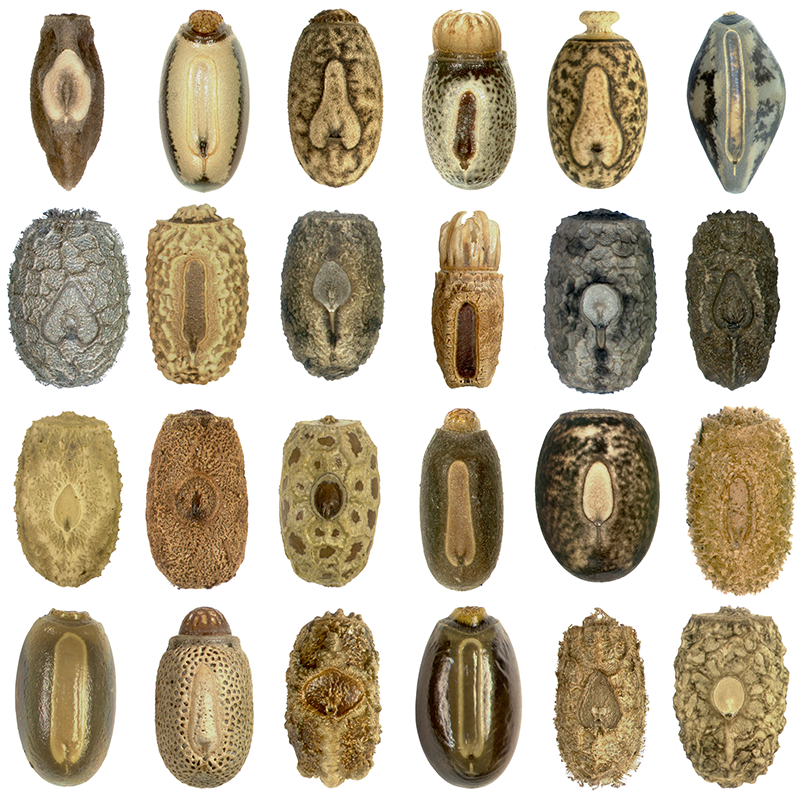

These Babies are Parasites
source link: https://nautil.us/these-babies-are-parasites-309655/
Go to the source link to view the article. You can view the picture content, updated content and better typesetting reading experience. If the link is broken, please click the button below to view the snapshot at that time.

These Babies are Parasites
How some animals figured out a free ride for their young.

When resources are scarce, some mothers can’t provide the care their newborns need, so their fledglings take advantage of other species to survive. “For all the animals that have brood care, there’s a parasite out there somewhere, parasitizing that care,” says Australian biologist Ros Gloag, who has spent the better part of two decades studying brood parasitism.

SCENT OF DECEPTION: A caterpillar of an Alcon blue butterfly smells like a baby ant, compelling ant workers to bring it back to their colony and feed it as if it were one of their own babies. Photo by Darlyne Murawski.
Gloag began looking at the behavior of honeybees, then moved into South American cowbirds and Australian cuckoos. Many parasitic species trick their hosts into providing care. Gloag explains it as an arms race. Cuckoos, for example, begin laying eggs in host nests, then the hosts evolve the ability to recognize and remove the cuckoo eggs, then the cuckoos evolve eggs that look like host eggs. Hosts become more discerning, and the egg mimicry becomes more convincing, to the point of matching size, shape, color, and pattern, in ways that we humans can’t even see.

FOOL ME ONCE: Despite their matching mouths, these two chicks belong to different species. On the right is a common waxbill; on the left is a parasitic pin-tailed whydah that has evolved to fool waxbill parents. Photo by Justin Schuetz.
Female dung beetles regularly parasitize each other’s tunnels and brood balls, both within and outside their species. They don’t just add their own egg, they dig into the brood ball to kill the hosts’ egg, then lay their own. The tougher the environmental conditions, the more likely they are to parasitize each other. In his laboratory at Indiana University, dung beetle researcher and German biologist Armin Moczek has shown that the rate of brood parasitism rises from 10 percent up to 50 percent as he makes conditions more stressful.

I’LL BE YOUR MIRROR: Many plant species produce seeds with lumps of edible fat attached–attracting ants, who bring the seeds back to their colony. The eggs of stick insects, pictured here, mimic these gift packages. Collection by ants disperses them to new locations and protects them underground until they hatch. Photo by Thomas van de Kamp.
Numerous butterfly species parasitize the brood care of ants by producing caterpillars that mimic ant larvae. They don’t even have to lay their eggs in an ant nest. The caterpillars smell so much like baby ants that they attract workers who assiduously collect the “lost” larvae and bring them back underground. Inside the ant colony, they’re protected and fed. Some species will even devour their adopted ant siblings, consuming so many larvae that the colony collapses.
But the ultimate defense against brood parasitism is pregnancy. No animal—other than humans—has yet figured out how to implant its own embryo into another animal’s womb. Pregnancy may have evolved as a protection against parasitism more broadly, both brood parasitism and infectious disease. ![]()
Adapted from Nursery Earth: The Wonderous Lives of Baby Animals and the Extraordinary Ways They Shape Our World by Danna Staaf. © Author/Publisher, 2023. Reprinted by permission of the publisher, The Experiment. Available everywhere books are sold.
Lead photo by Justin Schuetz
-
Danna Staaf
Posted on June 7, 2023
Danna Staaf is a science writer and author of Nursery Earth: The Wondrous Lives of Baby Animals and the Extraordinary Ways They Shape Our World, from which this piece was excerpted. Her last piece for Nautilus was “Animal Sex Determination is Weirder Than You Think.” She lives in San Jose, California, with her family and a frankly immoderate number of plush octopuses.
Get the Nautilus newsletter
Cutting-edge science, unraveled by the very brightest living thinkers.
Newsletter Signup (Embedded)
Recommend
About Joyk
Aggregate valuable and interesting links.
Joyk means Joy of geeK